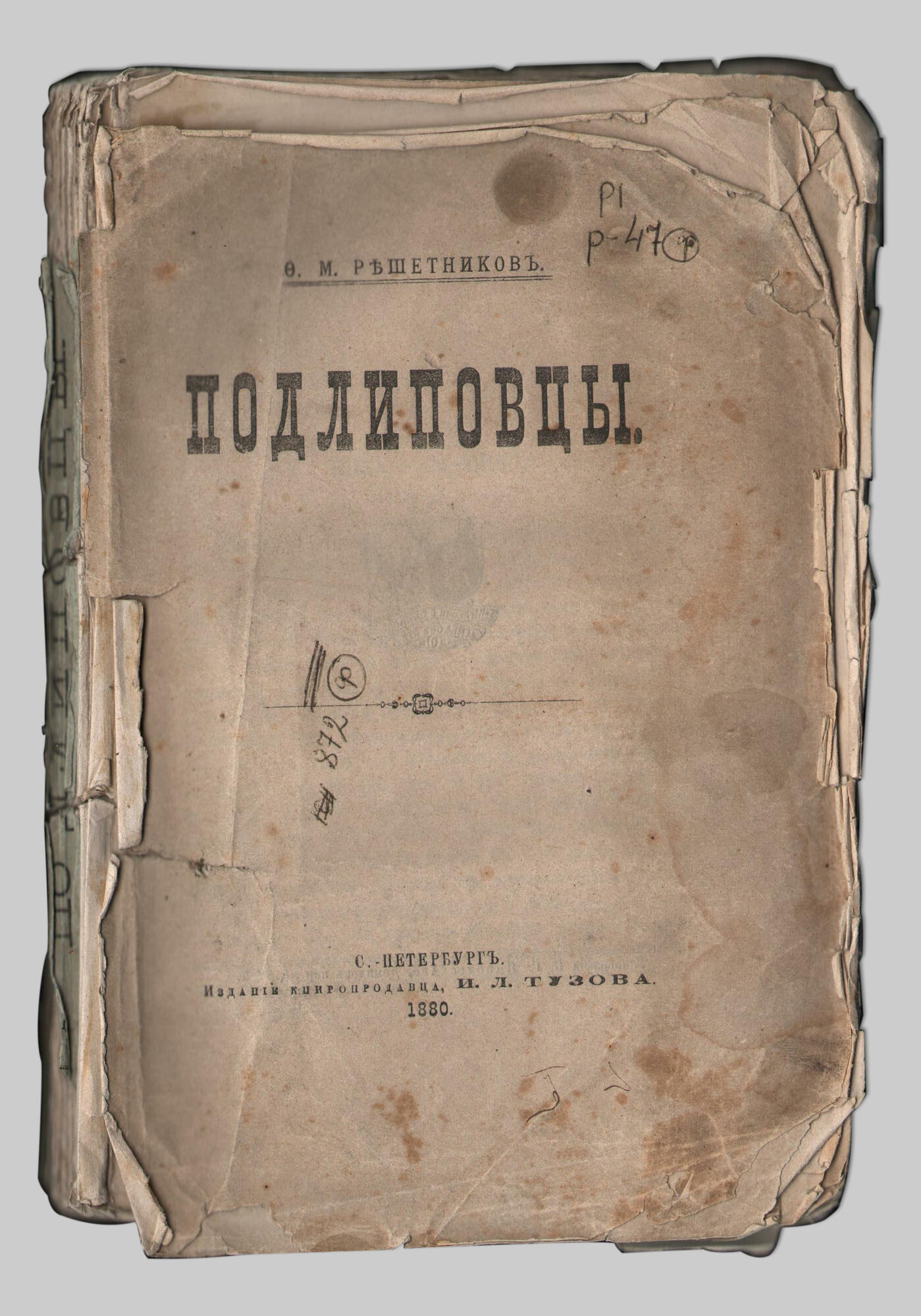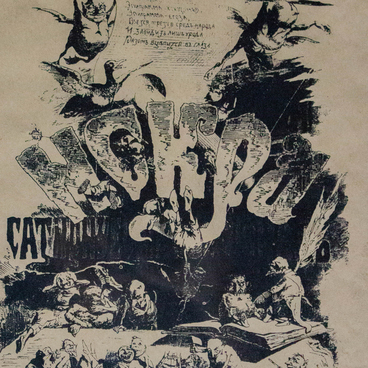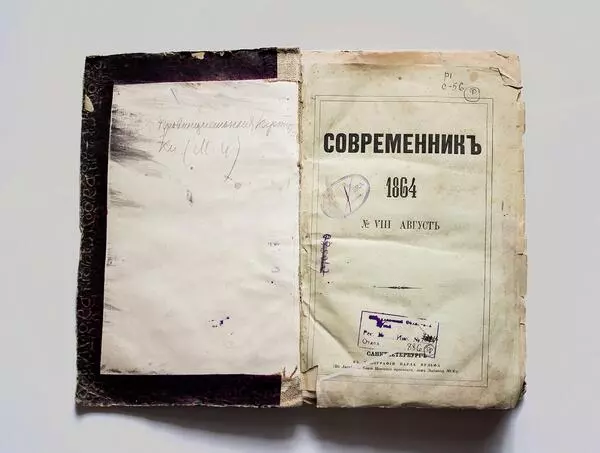The exposition contains one of the earliest editions of the novella titled ‘Podlipovtsy, ’ written by the Urals-born writer and essayist Fyodor Reshetnikov. ‘Podlipovtsy’ is an ‘ethnographic essay’ about the peasants of the Perm Governorate, who leave their village Podlipnaya in search of a better life and go to work as barge haulers. Podlipnaya becomes a kind of symbol of the outgoing era.
The first publication of the piece was in the 1864 issue of the Sovremennik (literally: Contemporary) magazine. There are different versions explaining how this story got to the editor of the magazine Nikolay Nekrasov and what fee Reshetnikov received. The story of Avdotya Panaeva, Nekrasov’s common-law wife, in her “Memoirs” looks most realistic. According to the memoirs, Nekrasov was generous and paid the writer 200 rubles. Reshetnikov himself was surprised by such support: “I have never held such an amount in my hands. I only woke up halfway through and realized that I could take a cab because I am a rich man now”.
In 1867, the story was published as a separate book. Reshetnikov received 61 rubles 25 kopecks for it. By agreement with the publisher, from that moment he was deprived of the rights to “Podlipovtsy”, so the story was not included in the first edition of collected works of the writer in 1869. Before the book was published in 1867, the publisher has asked the author to write an abstract, calling it “a little advertisement.” In Sankt-PeterbUrgskiye VEdomosti (Saint Petersburg News), the annotation to the story read: “…in the essay Podlipovtsy, the author, with all truthfulness, clarity and without any embellishment, outlined the life of the poor, downtrodden, wild at first sight people of the northeast of European part of Russia”. Subsequently, it appeared with some revisions in newspapers and magazines. In the 1869 issue of Otechestvennye Zapiski (Homeland Notes), the words “downtrodden and wild at first sight” were thrown out.
In the 20th century, the novella “Podlipovtsy” saw several re-releases. It became especially popular in the pre-war years. As noted by the literary critic Valery Sazhin, from 1920 to 1939 at least 15 editions were published, with a circulation of “400 thousand or more.” Sometimes the text was shortened. According to Sazhin, especially scary passages were removed and retold by “unknown editors or compilers.” In 1934, a synopsis of the Podlipovtsy, reduced to 39 pages, was published with the motto “A book for a socialist village”.
In 1867, the story was published as a separate book. Reshetnikov received 61 rubles 25 kopecks for it. By agreement with the publisher, from that moment he was deprived of the rights to “Podlipovtsy”, so the story was not included in the first edition of collected works of the writer in 1869. Before the book was published in 1867, the publisher has asked the author to write an abstract, calling it “a little advertisement.” In Sankt-PeterbUrgskiye VEdomosti (Saint Petersburg News), the annotation to the story read: “…in the essay Podlipovtsy, the author, with all truthfulness, clarity and without any embellishment, outlined the life of the poor, downtrodden, wild at first sight people of the northeast of European part of Russia”. Subsequently, it appeared with some revisions in newspapers and magazines. In the 1869 issue of Otechestvennye Zapiski (Homeland Notes), the words “downtrodden and wild at first sight” were thrown out.
In the 20th century, the novella “Podlipovtsy” saw several re-releases. It became especially popular in the pre-war years. As noted by the literary critic Valery Sazhin, from 1920 to 1939 at least 15 editions were published, with a circulation of “400 thousand or more.” Sometimes the text was shortened. According to Sazhin, especially scary passages were removed and retold by “unknown editors or compilers.” In 1934, a synopsis of the Podlipovtsy, reduced to 39 pages, was published with the motto “A book for a socialist village”.





